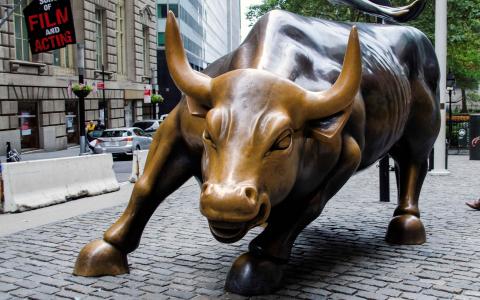
(Yahoo!Finance) - The S&P 500 has posted a mighty rally so far this year, having already more than doubled from pandemic lows last year while reporting massive earnings growth.
But some more bearish strategists aren’t convinced the party can go on into 2022. Bank of America, for one, is now predicting stocks will largely flatline through next year.
Given the recent rally, Savita Subramanian, Bank of America’s chief quantitative and equity strategist, now believes the S&P 500 will round out 2021 at 4,250 points, she wrote in a Wednesday note. That’s a march upward from her previous, bearish-at-the-time estimate of 3,800, but would still represent a 6% decline for the benchmark index from its Tuesday close of 4,520. And next year doesn’t bode much better, according to Subramanian: Bank of America now predicts the S&P 500 will finish 2022 at 4,600, a mere 2% higher than Tuesday’s close.
Subramanian has been among the more bearish voices on the Street at a time when stocks have been posting record highs. In recent weeks, slowing economic growth, rising inflation, and Delta variant concerns have begun to weigh on investors, fueling pessimism on the Street. And though she boosted the bank’s 2021 target, Subramanian sees reasons for caution moving forward.
“This may not end now. But when it ends, it could end badly,” she wrote of the latest market trends. “Investor sentiment and valuations are extended—a lot of optimism is already priced in—and our Long-Term Valuation Model indicates negative returns for the S&P 500 over the next decade (–0.8% annualized returns) for the first time since the Tech Bubble,” she added.
Key reasons for Subramanian’s cautious view include increasing wage and input costs and supply chain issues that are threatening companies’ profit margins, generating what she calls “downside risks to earnings amid rising inflationary pressure.”
Indeed, inflation and the all-important Federal Reserve remain a concern. With the Fed signaling it could begin tapering its asset purchases this year, stocks could see muted (or poorer) performance ahead, argues Subramanian, considering that returns have been heavily tied to the Fed’s balance sheet expansion in the years following the Great Financial Crisis.
Meanwhile, based on consensus equity allocation, Wall Street is “neutral on U.S. stocks, but remains closest to a ‘Sell’ signal since 2007, indicating tepid 12 [month] returns on the S&P 500,” she wrote.
Of course, not all analysts share Bank of America’s relatively bleak view of stocks. LPL Financial’s Ryan Detrick notes that, with stocks having had such a strong year so far, “looking at the previous top 10 starts to a year ever, the final four months have gained eight times,” he wrote in a Wednesday note (see LPL’s chart below).
Lauren Goodwin, economist and portfolio strategist at New York Life Investments, argued in a Tuesday note that “strong economic and corporate fundamentals mean that recovery can be sustained and risk assets will [go] higher,” though she added that she expects “moderating equity gains” and “more frequent pullbacks” ahead.
But what should investors own if they expect a more tepid environment? According to Subramanian, “inflation-protected yield is the scarce resource in a low-rate world where inflation is brewing.”
In that environment, she favors dividend growth stocks in sectors “that benefit from inflation,” namely in energy, financials, and materials. Small-caps should also “outperform from here,” argues Subramanian, as “they are more tethered to U.S. GDP/capex, and unlike the S&P 500, current valuations suggest gains over the next 10 [years].”
By Anne Sraders




